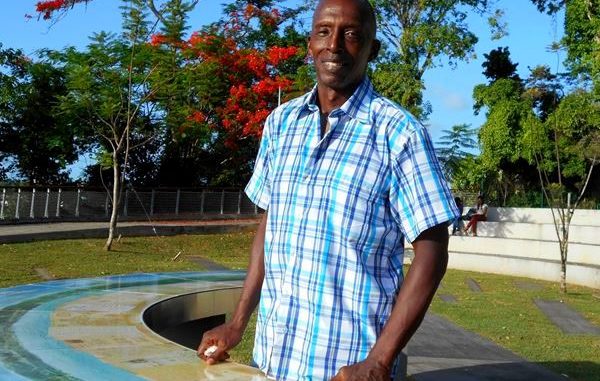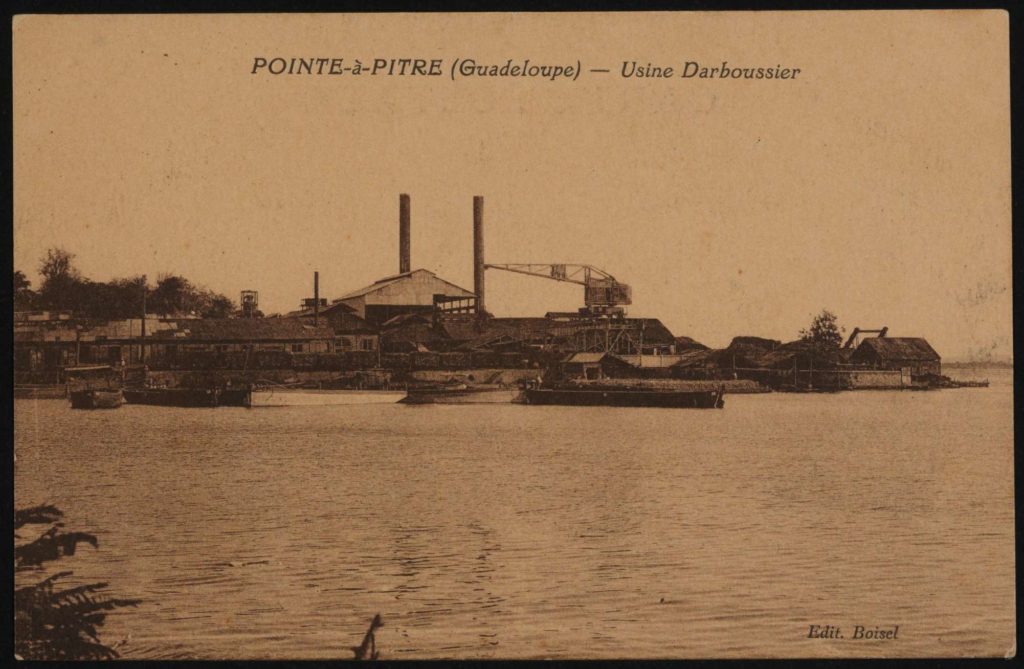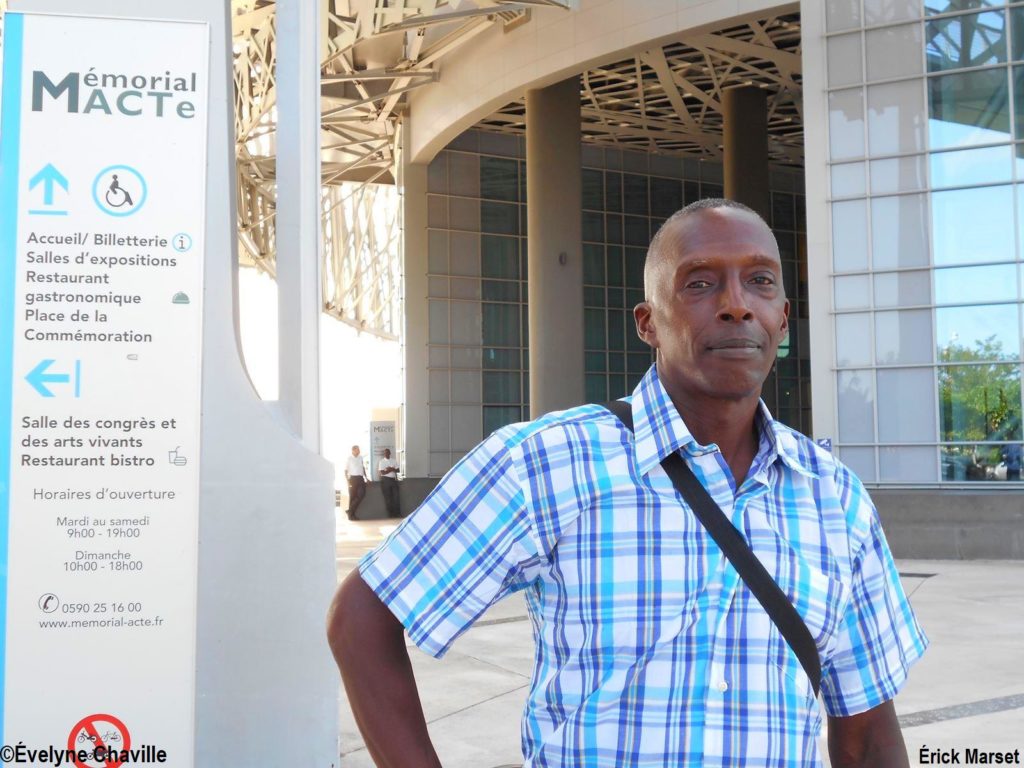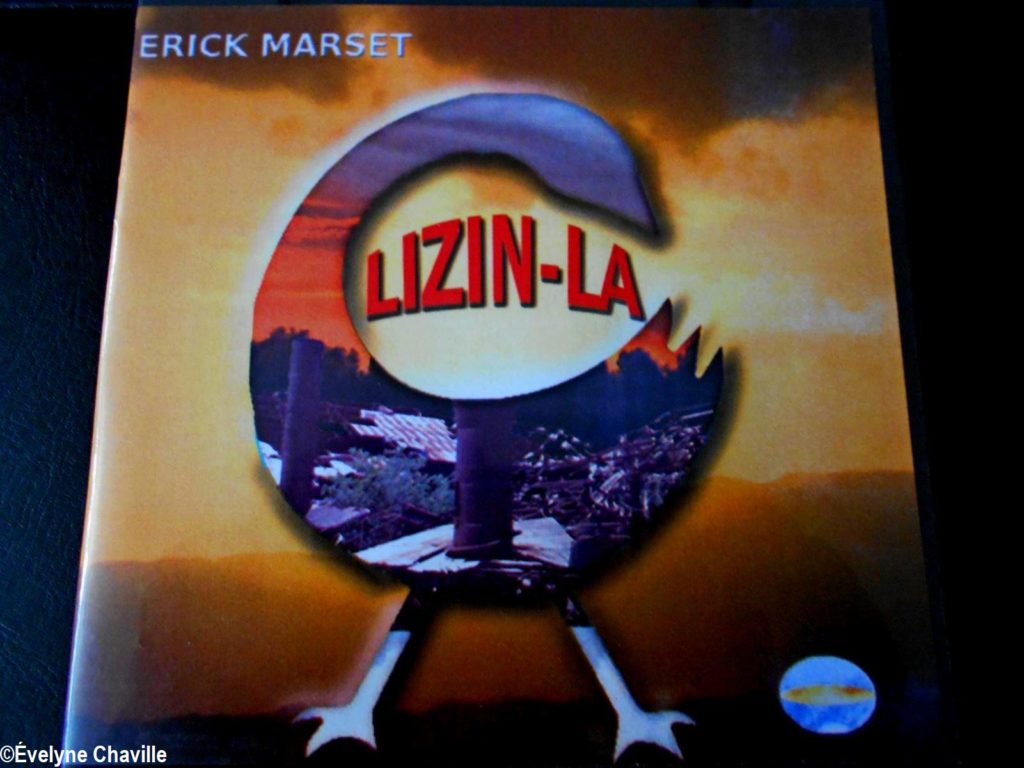
“Lizin-la” (The Factory) is the name of a CD that released Guadeloupean writer and actor, Érick Marset. He tells his memories and impressions about the former Darboussier sugar factory.

To tell us about his work, the best place was to make an appointment with Érick Marset on the site of this former Darboussier factory located at the entrance to the bay of Pointe-à-Pitre. A few years ago, this building was razed to the ground to build new social housing in its place, moreover some new inhabitants people had already had the opportunity to tell us that, at night, they sometimes heard the noise of the factory that is running as well as voices…
The Memorial ACTe (Caribbean Centre of Expressions and Memory of the Transatlantic Slave trade and Slavery) that opened to the public in 2015 has also been set up in this location. Only the administrative building of the factory has been preserved, it will soon be converted into a Center of Contemporary Art by the Guadeloupe Regional Council with the financial support of the French Government.
“I did not live in this district, my parents did not work there like many Guadeloupeans at that time but I remember an uncle and a cousin who worked there and when they came home, they told the life in the factory. There were a lot of trades here: chemists, ironworkers, carpenters, welders etc. However, I was immersed in the sugar industry because when I was a kid, the locomotive went through Vieux-Bourg in Les Abymes where I lived, some climbed the wagons and sometimes fell… When I went to the Léon Fleix Primary School which was built of wood at the time in the L’Assainissement district in Pointe-à-Pitre, trucks filled with sugar canes went through Hincelin Street, some pupils rushed to pick up the canes falling, I never did it for fear somebody would see me and talk to my parents, they were quite strict. When I was a child, I did not have the opportunity to enter this big factory, I just passed by bus since as today public transport took Raspail street”, he said.
When the Darboussier sugar factory ceased trading in the early 1990s, Érick Marset went to the site and today, with his eyes shinning, he still remembers this idle factory in detail.

A return to the roots with text, music and sound effects
From 2010 to 2011, he collected many memories from people who worked on the site or who saw the evolution of the sugar industry in Guadeloupe. In 2015, he had the idea of giving another facet to his work and, in 2016, he began to write a text in Creole from his investigations and memories of the Darboussier sugar factory.
Today, the CD called “Lizin-la” is released, this is a text with a duration of 11 minutes and 20 seconds written in a poetic form with sound effects and music and read by the actor.
“It took me almost four years to make this project happen. The writing of the text took a lot of time, I could not find the way to say things, I had to be efficient, imaged and translate the correct meaning in Creole, only one sentence is in French”, said the writer.
Sound effects are very important because they allow to understand what is happening. So, at first, we hear animals and we understand that the action takes place in Africa, then we guess an attack, there are shots and screams, after we imagine the sea and a crossing, finally we imagine dry land and we hear the whips… Following this trip, the listener arrives in the world of sugar cane. According to Érick Marset, the musician Frédéric Caracas and the sound engineer Daniel Trépy felt “very concerned” by his project and, thanks to their professionalism and generosity, they were able to produce exactly the work he wanted to present to the public.
To illustrate the CD cover, the artist has chosen the symbol of “Sanfoka” meaning “Return to the sources” in Akan language of Ghana (Africa) and represented by a mythical bird which goes forward his head turned backwards with an egg in his beak ; so, it is an invitation to know one’s past in order to move forward, the future is symbolized by the egg.
Through this CD entitled “Lizin-la”, the writer wants to say to the Guadeloupeans “they should not be ashamed of their past but they must know it well, digest it to have the strength to set out the future”.
Soon, Érick Marset may propose a new work from another vestige of Guadeloupe. “I am very attracted by these old buildings, mills in particular, it is as if they talk to me”, he said.













